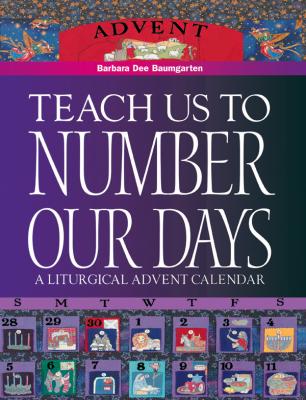Teach Us to Number Our Days. Barbara Dee Baumgarten
Чтение книги онлайн.
Читать онлайн книгу Teach Us to Number Our Days - Barbara Dee Baumgarten страница 5
 17
17
Once your list is complete, proceed to the instructions for making the calendar, found in chapters 7, 8 and 9. (The above list corresponds to the sample junk-mail version pictured.)
A Few Suggestions
Some of the days of Advent require advance preparation. For example, supplies to make the Advent wreath on the First Sunday of Advent should be gathered before that Sunday. This is an easy thing to overlook since the First Sunday is the Sunday after Thanksgiving. If you opt to provide surprises on the feast of St. Nicholas, December 6, the stockings or shoes need to be set out the night before. The feast of St. Lucy on December 13 involves a special breakfast. Shopping needs to be done before opening the calendar on the morning of the thirteenth, lest you are caught short, without treats for a “Lucy breakfast.”
Always be ready.
—I Peter 3:15
When you select your Advent calendar dates, note the dates on your household and daily planners as well. For example, the purchase of the Christmas tree can be an event that requires many hours and thus you may select a date on your daily calendar or planner that is completely open. Noting the date on multiple calendars helps keep it free for the activity.
Baking and decorating cookies can be an all-day event that requires shopping in advance. Baking cookies is a messy business. Scheduling the baking just before housecleaning, so that you’ll know the mess is temporary, can cut down on the stress. This is one reason this calendar works: you can relax knowing that what needs to occur during Advent is scheduled and reserved in advance. In other words, the Advent calendar and the household calendar are coordinated to work together and eliminate the harried stress that is all too common during Advent.
The Colors of Advent
No season is more colorful than Christmas. Although Advent is not Christmas, it contains colors distinct to its expectant and preparatory character.
They shall use gold, blue, purple, and crimson yarns.
—Exodus 28:5
Gold signifies the wealth of those who watch for Christ, the Sun of Righteousness and the King of kings.
Blue, especially ensign or ultramarine, signifies hopeful expectation. It symbolizes the “glorious impossible” of Christ fully human, and the vast expanse of God’s love, resembling the sky and waters, spreads over the entire earth. The dominant color of Advent, blue is traditionally associated with the Virgin Mary, whose constancy of faith reveals the goodness of God.
Purple, the color of royalty and power, heralds the coming of the King of kings. Purple reminds us that repentance and suffering lead to recognition of and alignment with God.
Crimson signifies the creative power of God evidenced in the fire of divine love, the blood of the martyrs and the Holy Spirit.
Rose, the color at dawn, heralds the imminent arrival of the sun—and Son. It is used on the Third Sunday of Advent.
White indicates Christ the Light, who is pure and holy love and the source of life. It is the color of Christmas.
Green represents the hope of spring and immortality.
* The calendar-making directions in chapter 9, section 7 (pp. 108-110), describe how to handle a date that urges two observances, such as when the First Sunday of Advent falls on the feast of St. Andrew.
* The P symbols signify major fixed dates to be made permanent on the calendar.
Chapter 2
A Historical Overview of Advent
Jesus was born in Bethlehem of Judah during the reign of Herod. The dates Herod governed (37 B.C.E.–4 C.E.) enable us to approximate the year of Jesus’ birth, but we do not know the time of year or the actual date. To add to the mystery, we do not know for certain when or why the feast of Christmas was set by the church on December 25. Literature about the early church before the fourth century mentions little regarding the Christmas festivals. When these feasts are mentioned, their origins are not discussed, only the fact that the feasts are kept. Late fourth-century texts tell us that the birth of Jesus was celebrated as the Epiphany, on January 6, in the East and as Christmas, on December 25, in the West. Advent is not mentioned until much later, toward the end of the sixth century.
Joseph went to [Bethlehem to] be registered with Mary, to whom he was engaged and who was expecting a child.
—Luke 2:5
By the end of the fourth century, the Christian calendar was essentially as it is today. The church had yet to discern whether